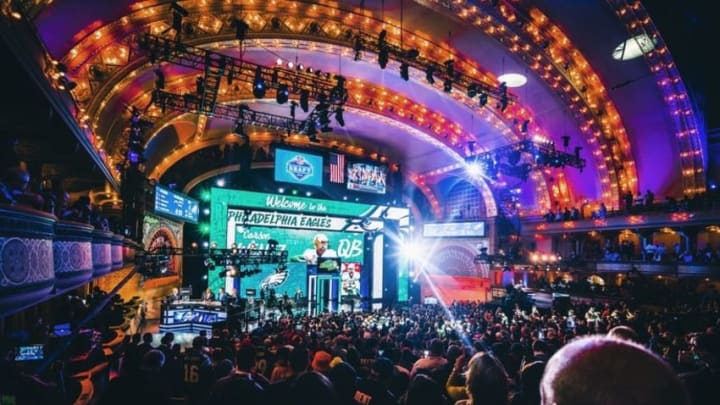Cleveland Browns: Who Was The Biggest Reach and Steal?
By Ryan Rosko

The Cleveland Browns recently completed their 2016 NFL Draft class. Who was their biggest reach and the best steal in their draft class?
Knowing how NFL teams did in a specific draft takes time. Before declaring how well teams did, fans and the media should typically wait three NFL seasons before taking into account their level of success. Unfortunately, for the Cleveland Browns, that approach has not happened often over the last number of years.
Cleveland’s draft picks in past recent drafts have not been able to get to that third-year mark to make a definitive decision. If on occasion certain draft classes did reach that mark, many of the Browns draft picks provide enough information for a better long-term answer in year four and on.
That is because of a number of issues ranging from injuries, inconsistent level of play, depth chart fluctuation, or some of them are simply out of the NFL. This year’s draft class for the Cleveland Browns is not meant to fix their issues instantly.
Instead, after a few years of drafting, then Cleveland will start having the players they want/need to do what they are trying to accomplish. For that reason, it is even more important to wait and hold judgment.
Then again, some of those players could show quickly whether they are a hit or miss player. So who really was Cleveland’s biggest reach and the best steal in their draft class?
More from Factory of Sadness
- Bet $1 on ANYTHING to Unlock $200 Guaranteed with Crazy Bet365 Ohio Promo!
- 3 reasons why the Cleveland Cavaliers have a good shot to win the East next year
- It might be too soon to say it but it looks like the Cleveland Guardians are back
- Are the Cleveland Browns a Top 10 roster heading into the 2023 season?
- Eastern Conference Solidarity: Back the Heat with $5 Bet, Win $200 Bonus INSTANTLY with DraftKings Promo
The Cleveland Browns’ biggest reach for this year is Princeton tight end Seth DeValve, their fifth round, 138th overall selection. If Cleveland really wanted a tight end, they could have selected someone who is definitely a tight end rather than DeValve, who is a tweener at multiple positions.
DeValve also has had surgeries in the past on his feet (non-football related), and would not be surprised if he needed another one if it is required to improve his health. Instead, the Browns could have selected a different player and then a better tight end later such as South Carolina’s Jerell Adams or Montana’s Beau Sandland.
DeValve was mainly a wide receiver in college but even though he is no sure thing (compared to others at his position), Cleveland went with him. The Browns front office’s top reason to have had liked DeValve so early is likely his athletic ability at multiple positions. DeValve is another example of quantity over quality.
The Cleveland Browns’ best steal in their draft class is Arizona linebacker Scooby Wright III, their seventh round, 250th overall selection. Wright is a tackling machine and prior to injuring his knee last season, he was on pace for another great season — possibly on his way to winning back to back Bronko Nagurski and/or Chuck Bednarik trophies.
Due to his injury, Wright was expected to drop but not many probably expected him to be a seventh rounder and nearly undrafted! In 2014, Wright led the nation with 164 total tackles, 31 for loss, and five forced fumbles. Had it not been for his injury, Wright would have been drafted much sooner.
Now that Wright is a member of the Cleveland Browns, he will do a great job on special teams. There are already linebackers on the roster who could be on their way out after this season because they cannot make plays. Wright makes plays, many of then actually per game when healthy.
Next: What We Know About Browns Emmanuel Ogbah
Assuming Wright’s knee is good, I would not be surprised to see him at minimum replace Tank Carder in his role on special teams. By year two should, Wright should either be starting or be extensively considered for such a role should an opportunity arise.